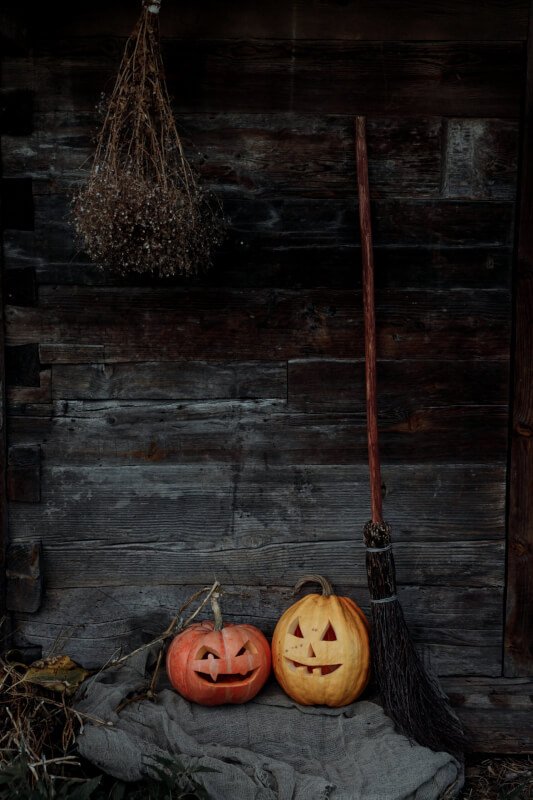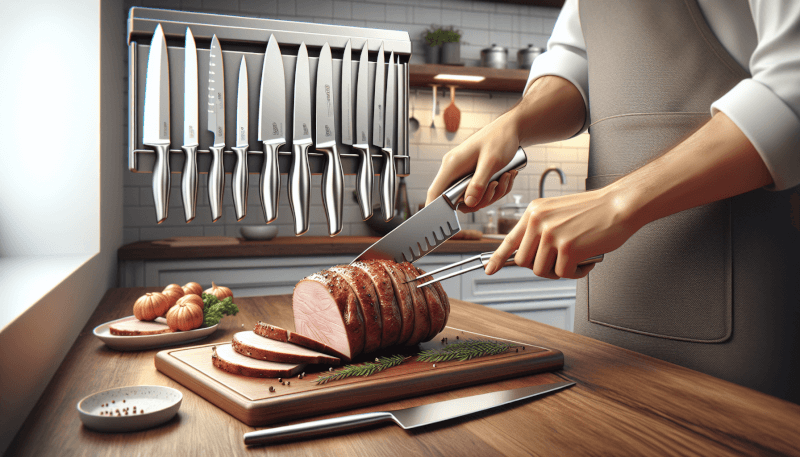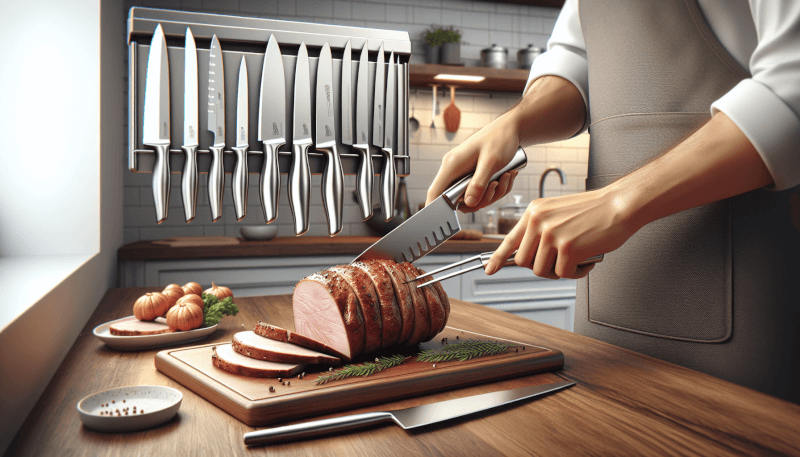When it comes to perfectly slicing through succulent roasts and tender poultry, a carving knife is your trusted culinary companion. With its long, narrow blade and razor-sharp edge, this specialized tool effortlessly glides through meats, ensuring clean and precise cuts every time. Whether you’re carving a holiday roast or preparing an exquisite roast chicken for dinner, the carving knife is the unsung hero that guarantees mouthwatering results. Let’s explore the important role this versatile knife plays in elevating your carving skills to new heights.

Understanding the Purpose of a Carving Knife
A carving knife is an essential tool for anyone who enjoys cooking roasts and poultry. Its main purpose is to slice through large pieces of meat with precision and ease. Unlike regular kitchen knives, carving knives are specifically designed to create clean and even cuts, making them perfect for presenting beautifully carved meat at the dinner table. By using a carving knife, you can elevate your culinary skills and create impressive dishes that are not only delicious but visually appealing as well.
Importance of Choosing the Right Carving Knife
Choosing the right carving knife is crucial for achieving optimal results in the kitchen. A good carving knife should have a long, thin, and narrow blade, which allows for better control and maneuverability. The sharpness of the blade is also essential as it ensures cleaner cuts and reduces the risk of tearing or shredding the meat. Additionally, it is important to consider the handle of the knife – it should be comfortable to hold and provide a secure grip, ensuring safe and precise slicing.
Key Features of a Carving Knife
When selecting a carving knife, there are several key features to consider. Firstly, the length of the blade is essential. Opt for a knife with a blade length between 8-12 inches, as this will provide sufficient reach and allow for precise cuts. The blade should also have a slight flex, which aids in navigating the contours of the meat. Furthermore, a full tang construction is preferred, meaning the blade extends the full length of the knife and is secured by the handle, ensuring stability and balance during use.
Different Types of Carving Knives
Carving knives come in various types, each with its own unique purpose. The most common types include slicers, carving forks, and electric carving knives. A slicer is the classic carving knife, characterized by its long and slender blade, perfect for slicing through roasts and poultry. Carving forks, on the other hand, are used to hold the meat steady while carving, ensuring precise cuts. Electric carving knives are a popular choice for those who prefer a powered tool to effortlessly slice through meat. Each type of carving knife offers its own advantages, so choose one that best suits your needs and preferences.

Benefits of Using a Carving Knife
Using a carving knife offers numerous benefits that enhance your cooking experience. Firstly, the long and narrow blade of a carving knife allows for thin and even slices, which not only improve the presentation of your dishes but also promote even cooking throughout the meat. This ensures that each bite is tender and full of flavor. Additionally, the sharpness of a carving knife reduces the effort required to slice through meat, making the task much easier and less time-consuming. The precision and control provided by a carving knife also allow you to carve meat with minimal wastage, ensuring you get the most out of your ingredients.
Carving Techniques using a Carving Knife
Mastering the proper carving techniques can greatly enhance your skills in the kitchen. When using a carving knife, it is essential to make long and smooth strokes, applying gentle pressure to maintain control over the blade. Start by cutting across the grain of the meat to create uniform slices. For poultry, separate the leg and breast from the body before slicing. When carving roasts, carefully remove any excess fat or connective tissue and carve against the grain for maximum tenderness. Remember to let the meat rest for a few minutes before slicing to allow the natural juices to redistribute, resulting in a succulent and flavorful dish.

How to Properly Hold a Carving Knife
Properly holding a carving knife is crucial for maintaining control and preventing accidents in the kitchen. Start by gripping the handle firmly, ensuring a comfortable and secure hold. Your index finger should rest along the side of the blade, providing guidance and stability. Place your other hand on the opposite side of the meat, using a carving fork or a clean kitchen towel to hold the meat steady. Make sure to keep your fingers clear of the blade and maintain a safe distance from the cutting edge to avoid any injuries.
Maintaining and Sharpening a Carving Knife
To ensure the longevity and performance of your carving knife, it is important to properly maintain and regularly sharpen it. After each use, wash the knife by hand with mild soap and water, avoiding abrasive materials that may damage the blade. Dry it thoroughly to prevent any rust or corrosion. To maintain a sharp edge, use a honing rod to realign the blade before each use. Additionally, consider sharpening the knife on a sharpening stone periodically to restore its sharpness. Proper maintenance and frequent sharpening will keep your carving knife in excellent condition, ready to carve with precision whenever you need it.

Safety Tips for Using a Carving Knife
While using a carving knife can greatly enhance your culinary skills, it is important to prioritize safety in the kitchen. Always exercise caution when handling a sharp blade to avoid accidents. Keep your fingers clear of the cutting edge and direct your cutting motions away from your body. It is advisable to use a cutting board with a non-slip surface to provide stability and prevent the knife from sliding. When not in use, store your carving knife in a knife block or sheath to protect the blade and prevent accidental injuries.
Alternative Tools for Carving Roasts and Poultry
While a carving knife is the traditional tool for carving roasts and poultry, there are alternative tools available for those who prefer different methods. Electric carving knives are a popular choice for those seeking convenience and ease of use, as they effortlessly slice through meat with minimal effort. Additionally, some may opt for specialty carving forks, which can be used in conjunction with a regular knife to hold the meat steady while carving. However, it is important to note that these alternative tools may not provide the same precision and control as a dedicated carving knife, so it is worth considering the specific requirements of your carving needs before deciding on an alternative.
In conclusion, a carving knife plays a vital role in the preparation and presentation of roasts and poultry. By choosing the right carving knife and mastering the correct carving techniques, you can elevate your culinary skills and create beautifully carved dishes that are not only delicious but visually appealing. Remember to prioritize safety when using a carving knife and regularly maintain and sharpen it to ensure optimal performance. Whether you prefer a classic slicer, an electric carving knife, or an alternative tool, investing in a quality carving knife will surely enhance your cooking experience and impress your dinner guests.



